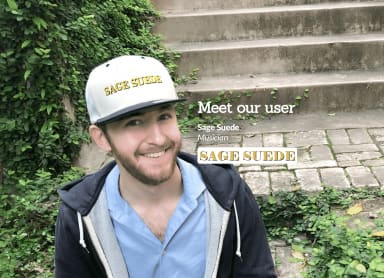Who is Douglas Engelbart and why have you never heard of him? It’s a good question because by all rights you should have. He’s kind of an entrepreneur but really more than that. He’s a visionary scientist that devoted himself to improving the lot of humanity, and he did, and you are using the tool he created.
Doug grew up in an idyllic setting in a nice farm in a beautiful spot near Portland, Oregon. After the depression he went off to study electrical engineering at Oregon State University, he went on to WWII, came back and got to work in the bay area as an electrical engineer at the Ames Laboratory, which some of you may know is the forerunner to NASA. However, with just a few years working at Ames, Doug grew restless.
AND HIS QUESTION TO HIMSELF WAS, ‘HOW CAN I BEST USE THOSE 5 1/2 MILLION MINUTES?’
He thought there really had to be something more important that he could be doing and working and dedicating his life to. Here’s his quote, “I looked downstream at work and saw one long, uneventful highway. Now I had no proper goals and nothing that really interested me.” And he realized this, he said that he’d been given 5 1/2 million minutes to work before he reached the age of 65. And his question to himself was, how can I best use those 5 1/2 million minutes? His answer to himself was, why don’t I try to maximize the value of my career in the sense of how I can best benefit mankind. And as he much later said, “Can you imagine that? To do this I don’t know where that came from.” But it was an epiphany and a vision and he decided that he was going to use his 5 1/2 million minutes for the benefit of mankind. So what does that mean? Well, he decided it probably had to do with computers.
Now, at the time he really didn’t know anything about how a computer works he would have said. He also said that right after his epiphany he had another one, and it goes like this. “I also had a very clear picture that ones colleagues could be sitting in other rooms with similar work stations tied to the same computer complex and they could be sharing work and collaborating very closely and within a matter of hours.” He realized that this was the crusade he really wanted to spend his life thinking about.
He had to go get a PhD, he had to get a PhD in Computer Science, but as he started searching for a program that could help him begin to take this epiphany to action he realized that their was no such thing as a computer science department in any school back in this time, it being 1955 and what not. So he settled at the University of California Berkely, a school that was building an experimental computer, and there he got his doctorate. After graduation, Dr. Engelbart accepted a research position at the Stanford Research Institute (SRI) now known at The Stanford Research Laboratory, where he in fact really quickly earned two dozen patents in a couple of years and started working on a conceptual framework for his computer vision.
By 1963 he had procured enough funding to start his own little research lab within SRI which he dubbed the Augmentation Research Center (ARC). And the augmentation he wanted to develop was human augmentation so he assembled a team and together they began to develop some research around the type of computer technology he believed would be required to augment human intellect, that being his life work.
Now, I want you to think of what a computer was at this time, 1959, 1962, 1963. Really, at this time, it was a giant box made with vacuum tubes, it filled one room, it got instructions from a punch card, it spat out data, and so his idea that a computer could be tied to some sort of display screen, that it would have images, that people would have different work stations, was kind of a heresy. And, in fact, what he called a direct manipulation interface was kind of scoffed at within SRI and it took almost 20 years later before Apple introduced Macintosh, which is the later vision of that kind of work. It took Douglas Engelbart to get us there.
How did he do it? Again, the things that his team at ARC were delving into, things like computer interconnectivity and the graphic manipulation of a screen were areas that no one, not only didn’t think about, no one cared about. As he says, “It was just so hard to find people who would take us seriously when computers were just so big and so expensive, but I realized that inevitably it would get smaller and smaller and faster and faster and cheaper and cheaper. And I realized that it might happen in my lifetime. But the thing is no one else did.” He was a true visionary.
So he started working and working and his team were, nevertheless, ARC, really had the opportunity because he had some patents and some traction to do the research it wanted. And it did so starting from scratch.
THIS IS HOW CRUDE IT WAS: THERE WASN’T ANYTHING LIKE A DISC. WE DIDN’T HAVE ANY MAGNETIC TAPE OR ANYTHING LIKE THAT. THE ONLY INPUT AND OUTPUT STORAGE MEDIUM WE HAD WAS PAPER AND TAPE.
Check this out. He says, “This is how crude it was, there wasn’t anything like a disc. We didn’t have any magnetic tape or anything like that. Even so, the only input and output storage medium we had was paper and tape. If we started editing something when you were ready to quit you would punch it out, wind it up, and when you were ready to go back to work you would first unload the parent program and then take out the tape, load your text, and start working on it. If it crashed you would have to go back and start all over again.”
So it was at a graphics conference around this time that Douglas Engelbart got yet another inspiration, and this is the inspiration for a computer pointing device that was to be his landmark. He said, “I carried around this little notebook for years and it was in my shirt pocket.” He recalls he was sitting at a graphics conference and wondering how the cursor on the screen might be controlled in a different way. He got to thinking about a device from his engineering days, and I bet if we think about it from our math days we can see what he’s talking about. It was a simple little mechanical thing, this rolling tool that had a bent arm and a little disc that rolled at the end.
And when one part of the mechanism rolled the disc at the other end followed the same path. And so you had this little wheel and as you pushed it further, it essentially doesn’t matter what path you follow between these two spots, because they ended up going to the same place. It will roll the same no matter what. “I just got to thinking about those two wheels and assumed the rest of it was really simple. And so I went to the lab and I made a sketch,” he said. And from that sketch the researchers at ARC made a, guessed it yet?
A computer mouse.
It was made from a wood block and the tool was, Engelbart said, a pretty simple thing going from moving a mouse on a pad to moving a cursor on the screen. It was really quite easy. Now they put three buttons on one end of the mouse, why? That was all there was room for. They named it mouse, because of course, it’s what it looked like. Although no one could remember who came up with the name Douglas Engelbart does remember. “You know, I can say this this thing we built, this thing called the mouse, it really just happened.” He received a patent for it in 1970 and it was called an XY Position Indicator for a Display System.
Now, at the same time, while everything was going great in his lab, things were not going very well outside of his lab. The higher ups at Stanford Research Institute were pretty troubled about Engelbart and what he wanted to do. They didn’t understand his vision, they didn’t understand his latest patent, his XY Rolling Device, funding was starting to dry up and they were getting ready to, frankly, can him. So, something dramatic had to happen if he wanted to stay in business and if him and ARC were to in fact stay in existence.
Well, as luck would have it, it was 1968 and Engelbart says that he just about had some things ready from the lab that he could demonstrate to people that would actually work. He heard about an upcoming computer convention that was going to happen in San Francisco and he thought that if he could put on a live demonstration of what ARC had created to date he might be able to attract enough attention to take his research to the next level.
So he called the conference promoters and offered to put on a live demonstration of just what a computer could actually do. And I think, by the way, this is great insight for any small business. At some point, getting some PR, getting your name out there, getting people to pay attention to you, can make a huge difference. It sure did with Douglas Engelbart. Now again, you have to remember what a radical thing this is.
The people putting on the conference were really hesitant. Twice they sent people to ARC to see what Engelbart and his colleagues were up to, so revolutionary was there work that even those who were putting on the conference didn’t know what he was talking about. It would be another decade before the first commercial of the computer Apple 2 had come onto the market, so really, this is way ahead of his time. It is true that the demonstration was a huge gamble. Not only was the team at ARC sure that they may or may not be able to pull it off but they knew that if they blew it the chances for their own promotion, there own success and the success of their own inventions would go down the tubes. Yet, despite the considerable risk Engelbart also knew he had to do something dramatic.
So, what he decided to do was have a live demonstration with a collegue at ARC in Palo Alto participating remotely. And the first thing they needed was a video projector, which back then was not a common piece of eqipment, so they rented one from some outfit in New York and they flew it out and a man as well to man it and run it for them.
On December 9th, 1968 Douglas Engelbart and the group of 17 researchers that he had been working with at the Augmentation Research Center at Stanford presented the first ever live public demonstration of an online system that they had been working on since 1962. There were about 1,000 computer professionals in attendance at this public presentation and for 90 minutes Dr. Engelbart used his mouse to manipulate pictures on a giant screen and again, remember, part of this team was in Palo Alto and part of the team was in San Francisco.
He reorganized a grocery list, he communicated with coworkers at SRI and Menlo Park thirty five miles away. He took and put their pictures on the screen, pictures from each mans mouse flickered on the screen as they jointly revised a document. Not only was this the first public debut ever of a computer mouse but it was also the first ever public demonstration of many computer tools that we all take for granted. Text editing, integration of text and graphics, shared screen teleconferencing, technology to allow people to really collaborate from different locations on the same problem, and this is in 1968.
And what happened? He received a standing ovation. “I never had to worry about funding again,” he says, “I keep being surprised when I run across people who were actually there because everyone says they were there and there were actually only 1,000 people there. It is an amazing demonstration.”
If you want to see a demonstration of the first time a wooden computer mouse was used to manipulate a screen you can go to https://history-computer.com/computer-mouse-complete-history/. It’s really interesting, it’s ancient, and Douglas Engelbart went on to be one of the great inventors of the 20th century. He passed away recently and was a fantastic and interesting man. He devoted his 5 ½ million minutes in a great way. How are you going to spend yours? How am I going to spend mine? Well, let’s think about what Douglas Engelbart did and use his tool to write down some ideas.
Steve Strauss is a Senior small business columnist at USA TODAY and author of 15 books, including The Small Business Bible.





